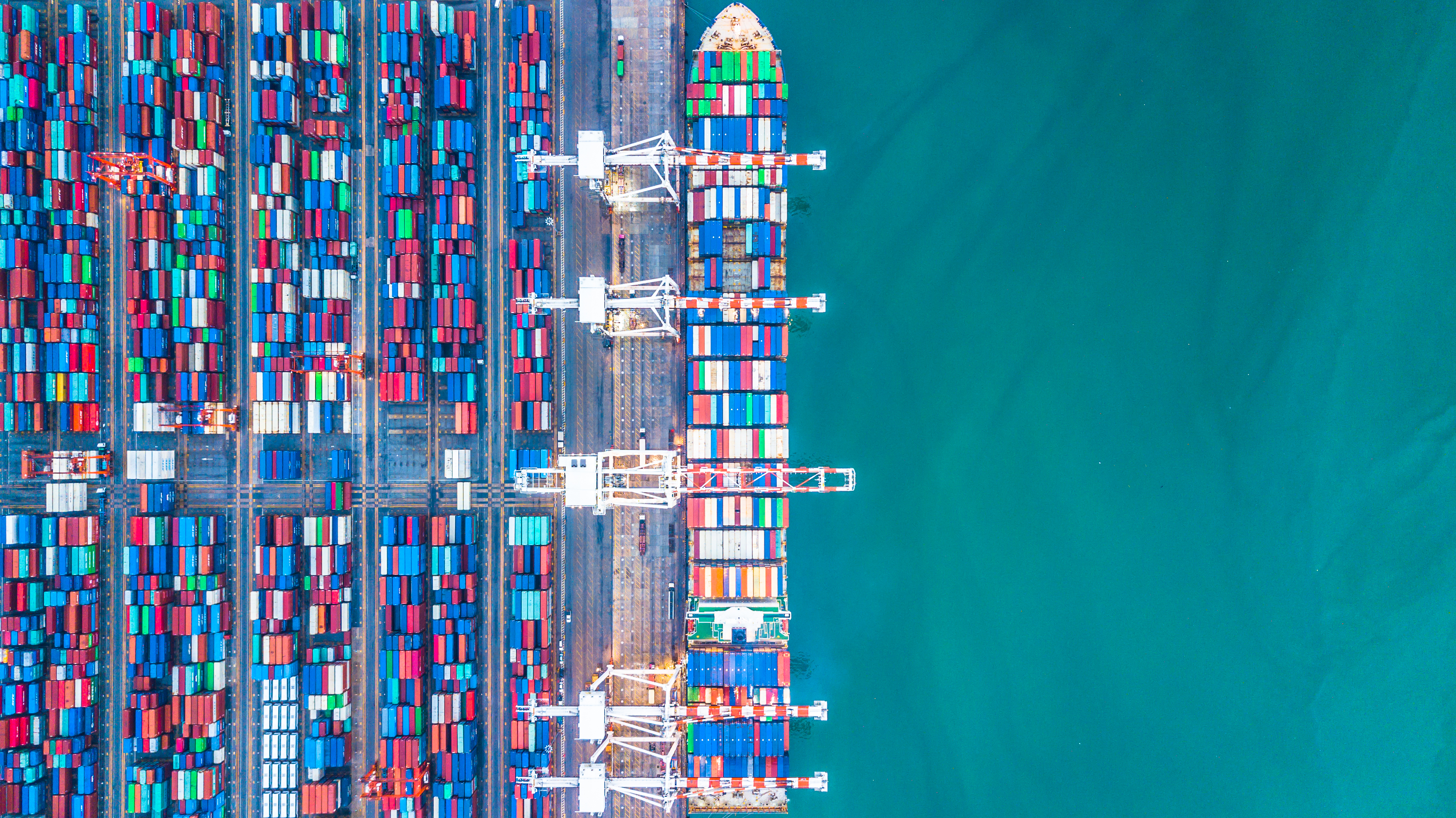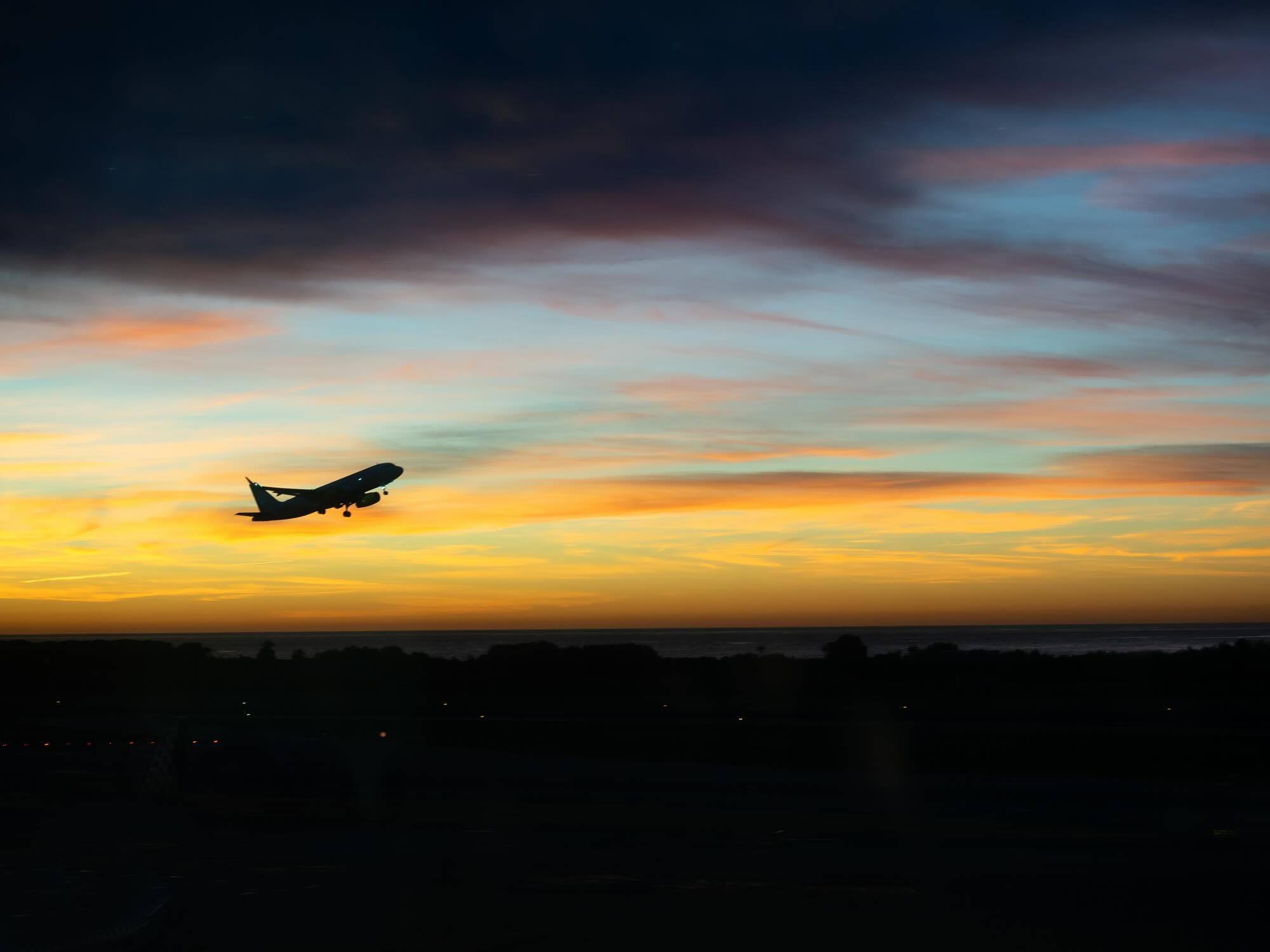
Global air freight traffic fell for the first in 18 months in February 2025. Transport prices are falling generally and the prospect of a trade war is causing concern.
1/ Supply and demand trends
- Traffic in February 2025
World air freight traffic in tonne-kilometres dipped 0.1% year on year in February, according to the figures of the International Air Transport Association. The dip is very slight, but it ends a sequence of 18 consecutive months of growth. On a seasonally corrected basis, demand was down 0.6% month on month, which takes the world traffic total to around 22 billion tonne-kilometres (tkm), according to our estimates, and 19.6 billion tkm excluding seasonal variations.
IATA has nevertheless minimalised the downward movement, recalling that February 2024 was exceptional, thanks to the favourable effects of the leap year, the dates of the Chinese New Year, disruption to shipping in the Red Sea and e-trade growth. "After correcting for seasonality, including the difference in the numbers of days, the air cargo traffic in February 2025 is 3.0% above that recorded in February 2024," IATA said. "This is roughly in line with January’s growth rate".
Although traffic overall diminished, international traffic continued to grow, edging up 0.4% in February 2025 year on year and rising 3.5% after correction for the leap year ad other seasonal factors.

* CTK : cargo tonnes-kilometres – Data source : IATA
Traffic flow remained fairly vigorous on the major world air freight routes. "Air cargo traffic on this route area reached 3.8 billion CTK in February, roughly unchanged from February 2024", IATA noted. The prospect of additional customs tariffs seems to have sustained demand levels, as some orders were placed early. Commercial transatlantic routes registered 4.5% growth year on year, while Asia-Europe routes, which represent the second biggest freight corridor after the transpacific corridor, registered a strong 4.7% rate, with a February traffic total of 3,6 billion ctk.
Another notable factor in the month was the dynamism of the intra-Asian market, which showed the strongest growth rate of all the major route categories, with an increase of 9% year on year. In February, intra-Asian routes became the fourth biggest route category, overtaking Middle East-Asia routes, which saw their traffic fall 6.2% year on year. Freight traffic between Europe and the Middle East and intra-European traffic was also down, with falls of 14.1% and 2.3% respectively year on year.
- Capacity
The airlines reacted to the demand slowdown by trying to control capacity. In tonne-kilometres, capacity slipped back 0.4% to 43.5 billion tonne-kilometres and load factor increased 0.1% to 45% by comparison with February 2024. After seasonal correction, capacity nevertheless increased 3.3% over February last year.
The airlines influenced capacity by limiting all-cargo capacity. Available capacity on cargo aircraft was reduced by 0.7% on international routes, while available capacity on passenger aircraft increased 2.4% year on year in February to 18.9 billion tonne-kilometres, representing 56% of all international capacity.
2/ Price trends
In the international sector, the fact that capacity rose more than demand affected air freight rates, which fell for the third consecutive month. Overall, average yield, including surcharges, was down 6.1% month on month to reach its lowest level for 12 months, according to IATA. This reduction is clearly greater than the fall in the price of air fuel, which was down only 2.1%.

Source: Upply Freight Index
Year on year, the Asia-Europe corridor was one of the few to avoid the fall in freight rates, although it is true that this corridor benefited from the ongoing instability which is handicapping shipping in the Red Sea, making air transport unavoidable for some time-sensitive products. Rates on the Europe-North America corridor also rose in reaction to the announcement of additional customs duties. Importers opted to order before they came into effect.
3/ Outlook
Growing trade tensions represent a major concern for the air freight business. "With equity markets already showing their discomfort, we urge governments to focus on dialogue over tariffs,” said Willie Walsh, IATA’s Director General. His message seemed barely audible, however, in the United States and China, which are already engaged in a battle of wills. For its part, the European Union is showing moderation and patience. This approach has been little rewarded so far, however, which could encourage it to take a tougher line in future.
- Positive factors
The trade war has taken on such proportions that it seems to overshadow what good news there is. In January, the industrial production index increased 3.2% year on year, to reach its highest level for two years. Moreover, in February, the Purchasing Managers' Indexes (PMI) indicated that industrial production exceeded the 50 point mark to reach 51.5, which is an indication of growth. The PMIs also showed an increase in new export orders in January at 49.6.
These figures were fairly encouraging for air freight demand, while, on the cost side, the fall in air fuel prices was also good news for the airlines.
By imposing massive additional trade tariffs and creating a climate of great uncertainty, however, the new Trump administration has torpedoed all these favourable indications. In February, consumer price inflation stayed high in the United States and economists warned that they would show another sharp rise when the new customs duties come into effect. In Europe and Japan, too, inflation only fell slightly compared to the previous month. China, on the other hand, had a different experience, as consumer prices fell in February. This deflationary pressure, which has been strong for several months already, risks being aggravated by the violent trade battle between China and the United States.
- But a troubling commercial climate
The vigour with which this new trade war is being fought has forced the major international institutions to revise their growth forecasts. In the interim economic outlook it published on 17 March, the OECD announced that global GDP would increase by 3.1% in 2025 and by 3% in 2026, which is to say by 0.2% and 0.3% respectively less than in its previous forecasts. Moreover, these figures do not take account of the customs duties promised by Donald Trump on 2 April. At this point, we do not know if these will last or if negotiations with the countries concerned will enable them to be rapidly removed. The OECD warned, "Further fragmentation of the global economy is a key concern (…). An illustrative exercise, where bilateral tariffs are raised further on all non-commodity imports into the United States with corresponding increases in tariffs applied to non-commodity imports from the United States in all other countries, shows that global output could fall by around 0.3% by the third year, and global inflation could rise by 0.4 percentage points per annum on average over the first three years. The impact of these shocks would be magnified if policy uncertainty were to increase further or there was widespread risk repricing in financial markets."
The air freight industry's dependence on the health of world trade suggests, therefore, that a period of great turbulence can be expected. This will be is all the more true for the fact that China, which has been the main target for US tariffs to date, currently plays a very important role in the world air freight sector, particularly in cross-border e-commerce, which has shown strong development in recent years. The White House announced that it was cancelling the de minimis rule for shipments from China and Hong Kong from 2 May. This rule, which grants shipments worth less than $800 exemption from customs duties, applies to a lot of air freight shipments. Its cancellation, if it is confirmed, could have a significant impact on transpacific air freight.
Our latest articles
-
Subscriber 2 min 19/12/2025Lire l'article -
Container shipping in 2025
Lire l'article -
Air cargo: the rerouting of flows is confirmed
Lire l'article



